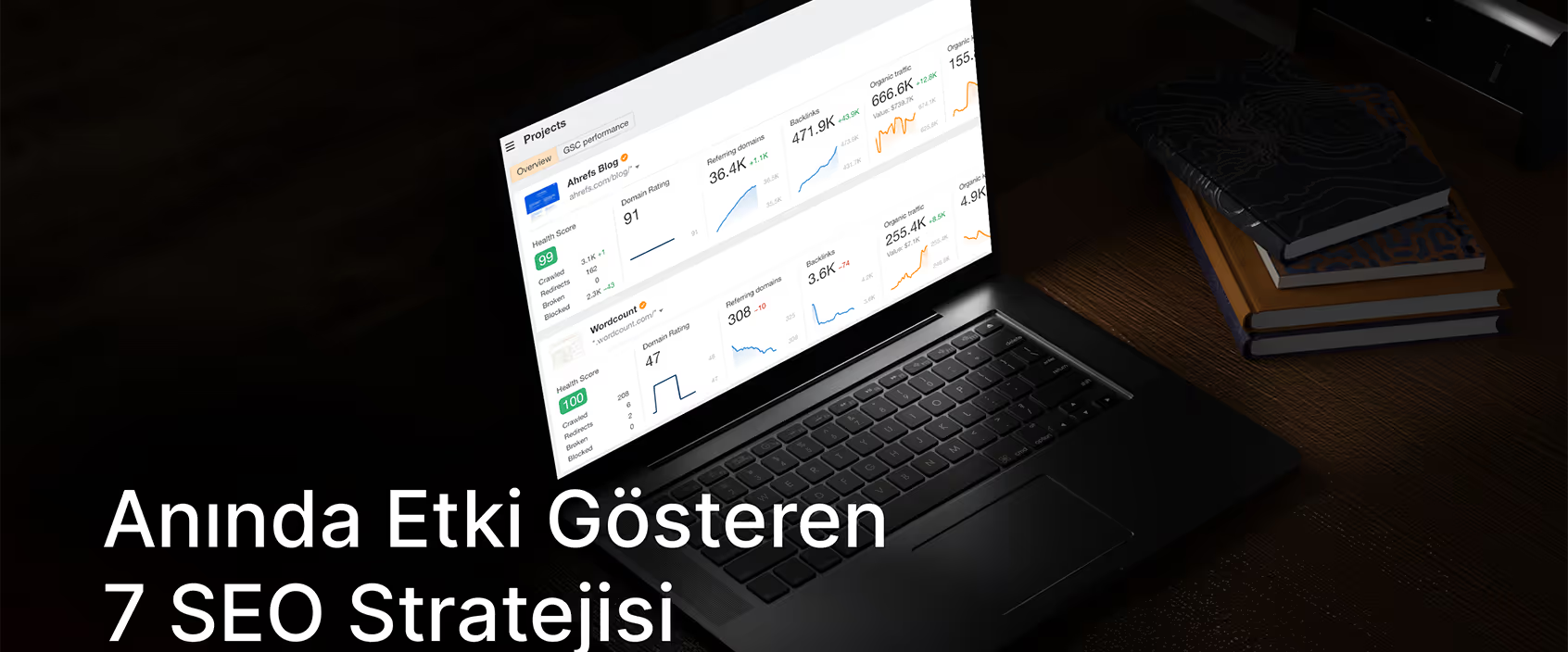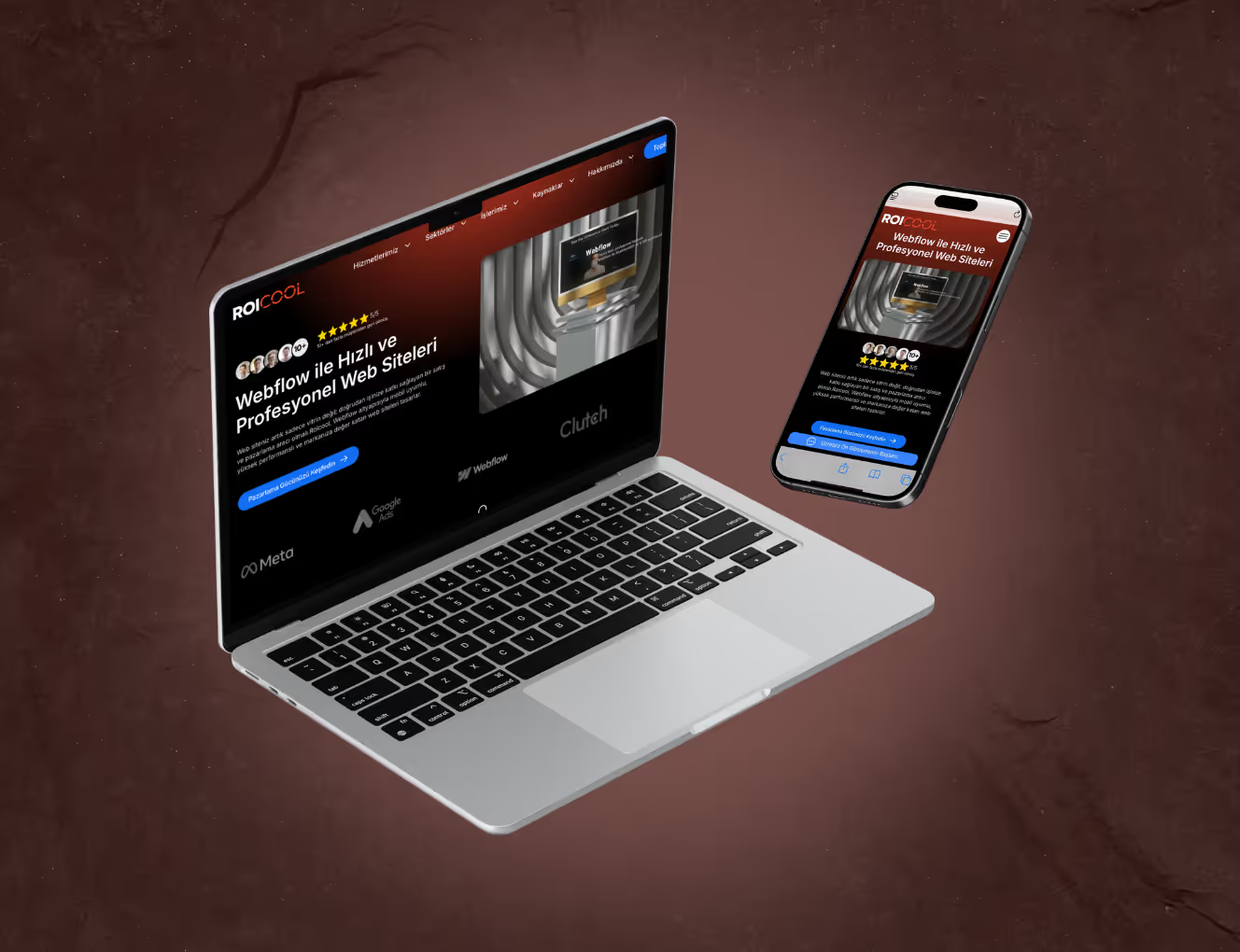It can be daunting to figure out which methods to focus on to improve your website's Google rankings. In particular, getting lost in a tangle of conflicting advice is not even a chore. But do not worry! This guide offers ways to quickly increase your website's online visibility and build emotional connections with your customers by focusing on actionable SEO tips that will produce immediate measurable results. If you are ready for practical steps that can significantly improve your website's search rankings in just a few minutes, let's get started!
SEO Strategies That Make an Instant Impact
If you're thinking about where to start your SEO work, let's take a closer look at seven strategies that will get you on the right track, deliver instant impact, and deliver noticeable results:
1. Update Landing Pages Ranked 10th and Below for Important Keywords That Are Your SEO Goal
This approach is one of my personal favorites. Recently, we implemented this strategy in the SEO strategy for one of our brands and achieved outstanding results in a short time. Our goal is to revive pages that have high potential but have not been explored enough.
So, how do we implement this strategy?
- Google Search ConsoleAnalyzing Performance Reports in:
- Log in to Google Search Console and select the “Performance” report from the left menu.
- Determine a convenient time period in which usually three months is enough.
- Pay attention to the “Average Position” metric, which shows the typical ranking of your pages in Google search results. This metric is a critical indicator for understanding the overall performance of your pages.
- Identifying High Average Positioned Pages and Queries:
- In the performance report, go to the “Queries” or “Pages” tab.
- Highlight pages and queries ranked 10 or higher by ranking by “Average Position”. That is, target pages that are on the second page or further back but have potential.
- Prioritize updating these pages. Especially those with higher impressions are of great importance as they mean more potential traffic. High impressions indicate that the search engine sees a potential for this keyword or page, but if clicks do not come, it is necessary to improve your content and presentation.
By updating these pages, you activate an existing ranking potential. Even with a small touch, you can experience big jumps in your ranking.
2. Win-Win Method: Add New Keywords to Old Content
User intent, which changes over time, changes the expectations of search engines as well. Content that used to rank well may no longer correspond exactly to the questions your audience is looking for. But instead of throwing this content away, by enriching it with new keywords expand the scope of both as well move to the rise again is possible.
This strategy means adding value to it rather than writing existing content from scratch. Conclusion? More visibility, more traffic — with less effort.
How To Do It?
- Log in to Google Search Console and from the left menu go to the “Performance” section.
- Go to the “Pages” tab and select the content you want to improve.
- Followed by By clicking on the “Queries” tab, see which search terms for this page receive impressions and clicks.
- Descending to the bottom of the list Getting high impressions and bringing low clicks Identify queries.
- New subheadings, paragraphs or paragraphs to the content of these queries FAQ (Frequently Asked Questions) Add in format.
Application Example:
Let's say you have a page “E-commerce SEO On “strategies” and in Search Console, you see queries like these:
- “product description SEO examples”
- “category page optimization”
- “ecommerce technique SEO What is it”
In this case, you can add short but clear answers to these queries to the content, or even create a “Frequently Asked Questions” section at the end of the page. So you both cover more search queries and increase your snippet potential.
Why is it Effective?
- Google, Extensive and up-to-date content rewards.
- As compliance with user intent increases The click-through rate also increases.
- You keep the page up to date without republishing.
With these small touches, it is possible to convert your old content into new traffic. Both search engines and users win — here's why this strategy is perfect win-win is the method.
3.Identify Snippet Opportunities Using Google Search Console
if Semrush Don't worry if you don't have access to paid vehicles like! Google Search Console is a free and effective starting point for identifying featured snippet opportunities. If you already have strong content on hand, Google may show it in some way, but you haven't reached “rank zero” yet. Let's figure it out and see how you can improve it:
How To Do It?
- Log in to Google Search Console and Open Performance Report
- From the left menu “Performance” Click on the section.
- Time interval “Last 3 months” or “Last 6 months” Select as (based on your traffic volume).
- From the left menu “Performance” Click on the section.
- Go to the Queries Tab and Identify Long Queued Questions
- Click the “Queries” tab.
- Scroll down to search for queries that contain phrases such as “how”, “what”, “when”, “best”, “useful”. These kinds of queries often have the potential to show up in featured snippets.
- Click the “Queries” tab.
- See Average Locations and Impressions
- Pages or queries Sort by “Average Position”.
- specifically 1st to 10th place located between and high impression area Focus on the queries.
- For these queries, your content may have a serious place on Google, but it means that you are not included in the snippet.
- Pages or queries Sort by “Average Position”.
- Search Query on Google and Review Snippet
- Search Google for the query you specify manually.
- If there is a snippet: Who is the opponent, what structure did he use (paragraph, list, table?)
- If there is no snippet: This may be an idle opportunity for you.
- Search Google for the query you specify manually.
- Make Your Content Eligible for Snippet
- Give a short and clear answer directly to the target query.
- Do not exceed 40—50 words in paragraphs.
- If necessary, use bulleted or numbered lists.
- Clarify the titles: “How to Do X?” , “What is Y?” like.
- Use the query H2 as the title and answer immediately below it.
- Give a short and clear answer directly to the target query.
With this method, you can also get into the snippet war without the need for paid tools, making your content more in line with user intent, winking at the zero rank. Google has already found you; now all you have to do is be able to give a better answer.
4.Detect and Refresh Traffic Losing Pages
Detect pages that have lost their performance, SEO success It is a critical step for. Most of the time old content gets overlooked, but you can recover those quiet traffic losses by doing regular content maintenance. Google Search Console is an excellent ally at this point. Here's how you can easily detect if your pages are in decline and revive them:
How To Do It?
- Log in to Search Console and Open Performance Report
- From the left menu “Performance” Click on the section.
- Before the time interval “Last 6 months” set to.
- From the left menu “Performance” Click on the section.
- Review Page Based Performance Change
- From tabs “Pages” Go to the part.
- Sort by “Number of clicks” using the filtering options in the upper right corner of the list.
- From tabs “Pages” Go to the part.
- Compare Dates for More Detailed Comparison
- Go to the “Date” filter again and “Date comparison” Use the option.
- For example, last 3 months vs. previous 3 months Compare in shape.
- Search Console, between these two periods click differences, impression changes, and average ranking differences It will show clearly.
- Go to the “Date” filter again and “Date comparison” Use the option.
- Identify Traffic Losing Pages
- Focus on pages that decrease in clicks, drop impressions, or decline in ranking.
- These pages are likely to be outdated, distanced from user intent, or weak in the face of competing content.
- Focus on pages that decrease in clicks, drop impressions, or decline in ranking.
- Refresh and Enrich Content
- Update old information, add deeper and comprehensive explanations.
- Empower the page with new data, examples, images, and structures that add more value to the user.
- Better address search intent by adding new keyword variations and long-tail questions to the content.
- Try to increase the click-through rate by rewriting titles and meta descriptions.
- Update old information, add deeper and comprehensive explanations.
With this method, you rediscover the value of your already existing investments, without producing content from scratch. Google loves content freshness and often rewards updated content that offers value to the user. Remember, content is as much content as producing content maintenance This is the golden rule of SEO.
Success in SEO is not just about following algorithms, but patience, consistency, and adapting to the ever-changing dynamics of the digital world Continuous optimization is possible with. Remember, before Google loves you, you have to love your readers, because true success is valuable content and continuous effort is a combination. -Mahmud Filoglu
5. Republish Outdated Pages With Low Traffic
This method involves reanimating pages that receive very little traffic. For example, pages that have received no visitors in the last three months should either be improved or removed. Keeping a dead page alive is a waste of resources.
How do you identify these pages?
- Access the Google Search Console performance report.
- Exclude pages with parameters or special characters, if any (this is often seen on dynamically generated pages and can complicate the analysis).
- Review pages that get impressions but don't get clicks. These pages have potential because Google shows them somehow, but users don't click.
Decide if these pages are worth improving. If not, uninstall (or make a 301 redirect); if they have potential, optimize and reissue to generate new traffic. Republishing means not only updating the date, but also a thorough review, updating and enrichment of the content. This indicates to Google that the page is still relevant and valuable.
6. Place Strategic Internal Links to Related Content from High Traffic Pages
Internal Linking often misunderstood or poorly implemented. Strategic internal linking involves driving traffic from high performing content to relevant, useful pages. This both improves the user experience and helps search engine bots discover and index important pages on your site more easily.
Ask yourself this:
- Will this internal connection add value to the user?
- Will users interact positively on the linked page?
For example, from your high-traffic content about website controls, you can give an internal link to a page that offers practical tools or guides tailored to the user's purpose. This leads the user to deeper information, while also distributing authority on your site to the relevant pages.
Strategically placed internal links increase user engagement and SEO performance significantly improves. This acts as a kind of “ballot box”; the more quality internal links a page receives, the more important Google may think that page is.
7. Use External Link Opportunities in Content That Solves User Issues
End users often search for information or ask questions on forums and Q&A platforms. Leveraging these platforms creates natural and relevant external connection opportunities. This is great not only for SEO, but also for brand awareness and direct engagement with your target audience.
For your site, which is aimed at a niche audience, consider:
- Identify the platforms where your audience is active (forums, communities, Reddit subreddits, Quora, etc.).
- Interact authentically, provide useful content, and naturally give links to your site within discussions. Never spam or join just to leave a link. Your goal is to add value to the community. While offering a real solution to a problem, providing a relevant link from your own content is both beneficial to the user and sends organic traffic and authority signals to your site.
These links increase your visibility, drive traffic and often lead to conversions. This is the “community. SEO“It is part of the presentation and is a sustainable strategy in the long term.
Conclusion: Success in SEO Requires Patience and Consistency
SEOis vital to increasing the visibility of your website and reaching your target audience. The seven practical, easy-to-implement strategies outlined in this guide can quickly dramatically improve your search rankings. But SEO success requires patience, consistency, and regular optimization.
SEO is constantly evolving, as search engine algorithms are regularly updated and user behavior changes. It is very important to stay informed and adapt your strategies accordingly. Something that works today may not be so effective tomorrow. So continuous learning and adaptation, long-term SEO success is the key.
Applying these instantly impactful strategies will kick-start your journey to improved rankings. Dedicate yourself to continuous learning, adjustments, and consistent effort to unleash your website's full potential. Success in SEO requires determination and patience — stay connected!
Let's Apply Together!
As Roicool, we receive an average of nearly 15,000 traffic per day to our brands with our SEO service. We always recommend SEO investments because the quality of organic traffic is very high and there will be a quality lead if the person converts.
These strategies are on your website personalized, realtime and a practical Our SEO service Together we can bring it to life. If you want to take your SEO to the next level and achieve sustainable success in search engines, Roicool just for you!
Take the first step right away to meet SEO support that focuses on measurable results, structured to your website's specific needs. Fill out the form below to get started — come on, let's grow your digital visibility together.










